A Battle Over Historic Designation
Developer Robert Joseph wants to demolish 1880s tavern but Ald. Bauman and Third Ward board vote for historic designation, which provides protection for now.
The Historic Third Ward Architectural Review Board (ARB) voted 5-0 Wednesday, May 27th, to concur with the recommendations of the Historic Preservation Commission and the Zoning, Neighborhoods and Development Committee that the 1880’s Catherine Foley — Miller Tavern Building at 266 E. Erie St. be granted a Historic Designation.
Developer Robert Joseph, who owns the former MIAD Student Union, had proposed that it be demolished to allow construction of a new building. Should the Common Council also agree to designate the building as a historic structure, that would not prevent its demolition, ARB Chairman Bob Bauman said. “All it would do is to institute a process for the demolition,” the Milwaukee alderman noted. “There are criteria for demolishing listed buildings. It’s a balancing test, basically.”
Joseph requested the ARB delay once again a vote on the issue, promising to come back in about 30 days with renderings of his proposed project. [Bauman was absent for the May 13th meeting and the board postponed the decision then.]
The renderings would convince board members that his proposal would conform to both the district’s guidelines for a replacement building and the guidelines for the demolition of an existing historic property, Joseph promised. Joseph said he had no plans to demolish the building absent board approval of a replacement, although Bauman made it clear he would put a hold on any demolition permit.
If the ARB failed to concur with the recommendations of the HPC and the ZND committee, Bauman warned, he would expect a hold to be put on any demolition permit, which would be in effect “a Temporary Restraining Order,” postponing the demolition. That would be followed by public hearings, and even possible litigation that could tie up the project for months.
Furthermore, if the board did not concur with the historic designation at this meeting, Bauman said he would introduce legislation to eliminate ARB involvement in the project and any future ones. He said he could pass the legislation in one cycle, if needed.
As far as the process of designating the building as historic, the question at hand is, “does it qualify?” Bauman said. That is a yes or no answer, he added. There is no balancing act involved, no judging the merits of the proposed project or other consideration.
Bauman called on City Clerk Jim Owczarski to recite the criteria for designation, as cited in the legislation, which Bauman authored. The criteria included “exceptional architectural interest,” “whether it contributes to the district as a whole,” “whether it is of such old, unusual material that it could not be replaced without great expense,” or if it provided a study of a region’s culture and heritage, among other factors.
At a previous meeting on May 13, the building’s particular qualifications were recited by Carlen Hatala, the city’s preservation officer.
Joseph expressed disappointment that the board was acting so decisively to save a building that his team finds to be beyond saving or alteration. Things always “went predictably and smoothly” in his past dealings with the board, he said, but now it had added a “substantial layer of unpredictability and complexity” to the development process, he said.
Bauman said, “we know what you want to do, and there is substantial opposition” to tearing down the building. “Will [historic designation] create more delay, will it be more costly? Yes.”
He went on to say the role of the historic designation would be to balance public and private interests in the development of the area and of the city as a whole. “Because of the rules and regulations [governing development in] the Historic Third Ward, it is the most valuable neighborhood in the city, and maybe even the state.”
“It’s likely I’ll kill the project,” Joseph said. “If it gets too hard, I’ll go elsewhere.”
Bauman was unmoved, noting that if it not for the Third Ward guidelines, “the neighborhood would still be a red light district filled with old factories.”
Bauman then asked for a motion on the matter. Nancy O’Keefe, Historic Third Ward executive director, offered one immediately. Then, Bauman asked for a second to the motion. The clock ticked, the crickets chirpped. Finally, he said, “well, I’ll second it.” The matter passed unanimously.
Catherine Foley — Miller Tavern
Plenty of Horne
-
Villa Terrace Will Host 100 Events For 100th Anniversary, Charts Vision For Future
 Apr 6th, 2024 by Michael Horne
Apr 6th, 2024 by Michael Horne
-
Notables Attend City Birthday Party
 Jan 27th, 2024 by Michael Horne
Jan 27th, 2024 by Michael Horne
-
Will There Be a City Attorney Race?
 Nov 21st, 2023 by Michael Horne
Nov 21st, 2023 by Michael Horne



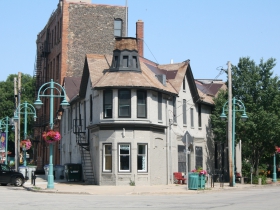
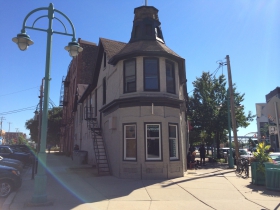
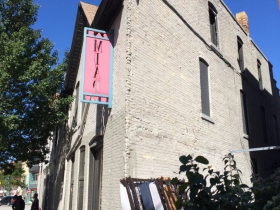
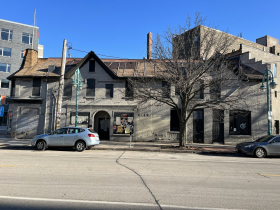
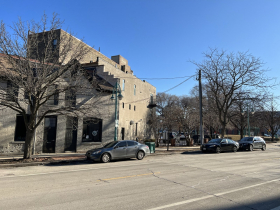
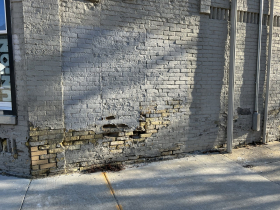




















Would seem this Robert Joseph, of a long line of city developers would be a little more… how should I say this… be cognizant of his family’s legacy?
Cool building. We should keep it.
Gee, what a lost opportunity for the Third Ward to get another soulless, characterless aluminum and bronzed glass behemoth. I hope it gets “too hard” and Robert Joseph “goes elsewhere”. Perhaps he could tear down Independence Hall in Philadelphia or the Old North Church in Boston. Another developer with more money than soul. There isn’t much left there that predates the Great Fire and harkens back to the days of the Irish “Bloody Ol’ Third”. The last thing you want in an historic neighborhood is a building with character. Buy a parking lot, dude, and pursue your condo dreams.
Bauman sez: “…. if it not for the Third Ward guidelines, the neighborhood would still be a red light district….”
Are there other reasons to repeal the guidelines or is this one sufficient? The “Third Ward” moniker is so bland; no marketing sizzle. I can see it being known as “Little Amsterdam”, inasmuch as New Amsterdam has been taken.
Why is the 3rd Ward so popular? Precisely because it doesn’t have a bunch of bland, faceless glass buildings that look like the pride of the Soviet bloc. The building has a great location and unique character. I hope reason prevails and it can be saved for someone with the vision to preserve it. I’m grateful to Alderman Bauman for advocating to save historic structures and neighborhoods.
If what the developer says is true and the building is a lost cause and the building is too costly to repair and the third ward association kills the deal by making it a historic building they should be required to pay the millions to get it up to code and in rentable/sellable shape. Aka they should put their money where their minds and mouths are. But obviously that wouldn’t happen, they want to make the decisions and have someone else pay for it.
Many buildings “in rough shape” have been repurposed in the Third Ward & elsewhere. I think this building has only been out of use a year or two.
MIAD is also a key player in all this. I read that the plan is to build student housing for MIAD. That’s a worthy goal, but that could happen elsewhere in the ward. This building is near Catalano Square and definitely adds historic character.
While there are many great rehabs in the Third Ward, there are still a lot of 4- or 5-story boxy buildings (even old ones). There are few smallish buildings, especially with character and a long history. Someone who appreciates the history and architecture could do a worthy renovation. Kudos to Bob Bauman for holding the line.
Picture this cream brick survivor of the 1892 Third Ward fire with historically appropriate size & shape windows, (including those in its tower) historically appropriate roof, a flag or banner on its flagpole, historically sympathetic awnings & plantings, and you will have the unique irreplaceable gem that it should be for all citizens & tourists to enjoy in this historic district. It is the only survivor I can think of in the entire ward with a pitched roof whereas all post-fire buildings had flat roofs. It needs to stay for the character of this neighborhood.